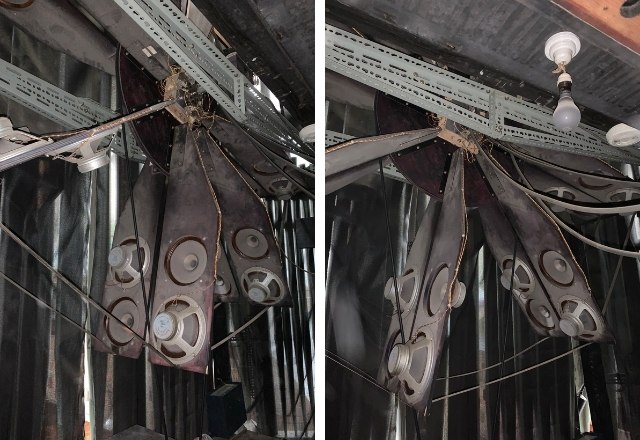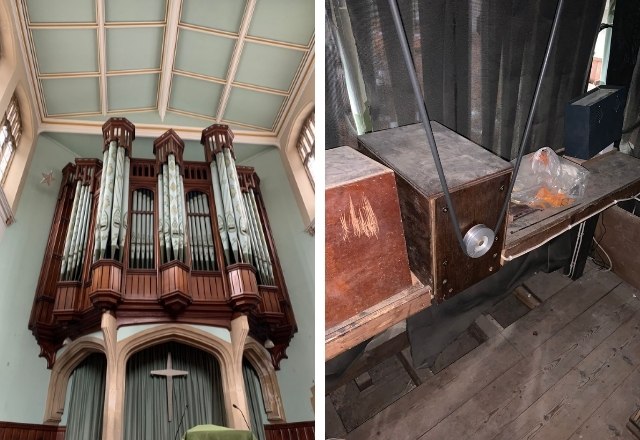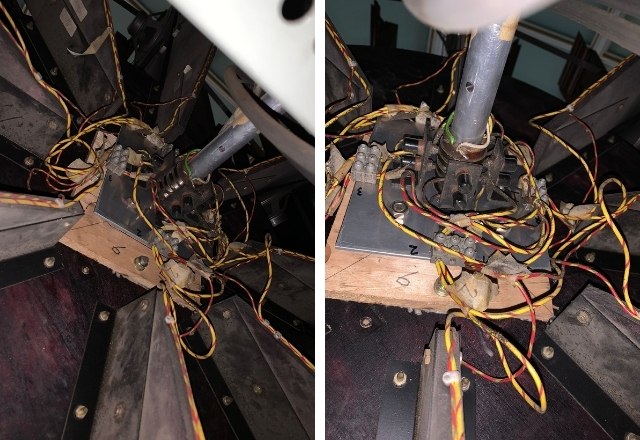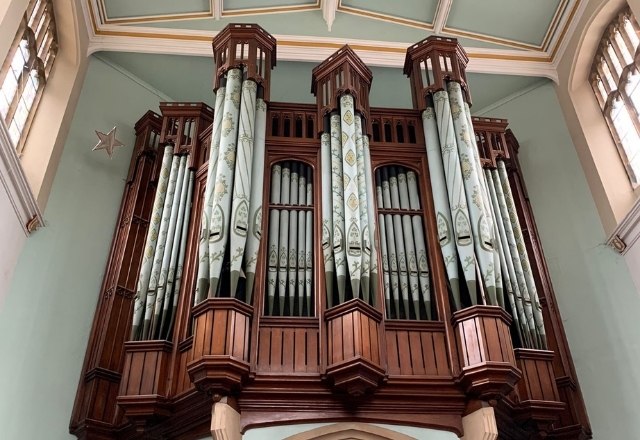While there have been huge advances in ‘organ tone’ generation over the last 50 years I believe it fair to say there has not been a similar scale of improvement in speaker technology.
This recent discovery shows that at least one person years ago was giving attention to the speaker end of the system. Perhaps it made a difference but clearly not one that encouraged the experiment to be repeated. I would be delighted if any reader of the blog can throw light on who may have created this set up and what it was linked up to.

Colleague and dealer Mark Gatrell of South Coast Organs was called in by a Hampshire church to stabilise the façade pipes of a long since silent pipe organ. I share with you below pictures of what he found.

The church now has an Allen organ playing on conventional speaker cabinets concealed in the pipe case. But ‘what on earth’ preceded the Allen playing through this set up that must have added some interesting mechanical noise to the final result.

I have seen lot of church speaker set ups but this one takes the top prize for effort and ingenuity. Whether or not that was rewarded in sound quality is sadly lost in the mists of time.
Do share your thoughts with us.
I have had a passion for church organs since the tender age of 12. I own and run Viscount Organs with a close attention to the detail that musicians appreciate; and a clear understanding of the benefits of digital technology and keeping to the traditional and emotional elements of organ playing.




Good morning
In my church Llanishen Baptist in Cardiff we have a similar speaker system. It’s like a propeller with speakers on the end & they used to rotate but don’t now.
Unfortunately we have lost a lot of top end on our organ & it’s very Bassey but the organ was installed in the late 80’s
Alastair Jenkins
Hi Alastair,
Thanks for reading the blog. So we now know there were two of these devices. What make of church organ used these speakers? Regards David
It looks like a Makin but I can confirm that with a few phone calls. From the 1960s, Compton offered a rotary chorale speaker called the ‘Rotofon’ for use with their Electrone organs. This had four arms each with one driver, rotating in a 4′ square cabinet. When Compton closed in 1971, Makin started up with all the leftovers but developed some of Compton’s inventions further than Compton did themselves. Thus the Makin rotary speaker resembles the Rotofon but more so, and complete with their signature Dexion slotted steel angle construction.
I have one of only two Makin organ generators known to be in preservation. If this speaker is ever removed, I would be interested to preserve it too. More info follows…
Thanks Lucien. Would be very interested to get more history on this fascinating device. Regards David
I am pleased to be able to advise you that the ‘custodian’ of some old Makin records has confirmed this is part of Makin electrostatic instrument No 013 built in 1975. A detailed history of the Makin/Compton businesses can be found on this link. https://www.organworkshop.co.uk/images/files/Makin_history_1972-1992.pdf
Speakers mounted with a short and direct acoustic path from the front of the cone to the rear must have been hopelessly inefficient: the sound pressure waves just shuttle to and fro from the front of the cone to the back. Was this it’s working configuration? How much power did they (have to) use?
There may have been a separate stationary bass speaker in an enclosure somewhere. Either “Infinite baffle” or reflex type. As you say, the efficiency of speakers mounted on small baffles with both front and back open would be poor especially at low frequencies.
I’ve seen Compton “Rotofon” speakers, this certainly looks to be something along the same lines. The speaker system would rotate slowly, producing an effect similar to a Leslie speaker’s “Chorale” setting. Probably at a somewhat lower rotation rate than used in a Leslie. In most cases there would be a fixed bass speaker in a sealed or reflex enclosure to get around the inefficiencies at low frequencies of unenclosed speakers.
Indeed. The rotating speaker section operated only above 8′ middle C, which is ~256Hz. (The baffle sizes are just fine!)
This array would have been devised & constructed by Fred Allen, who prior to Makins worked at Comptons in London, where all this stuff was invented.
The bass section would have had multiple 18″ drivers, it was the Compton way.
The idea looks like the original Leslie loudspeaker system which used rotating speakers